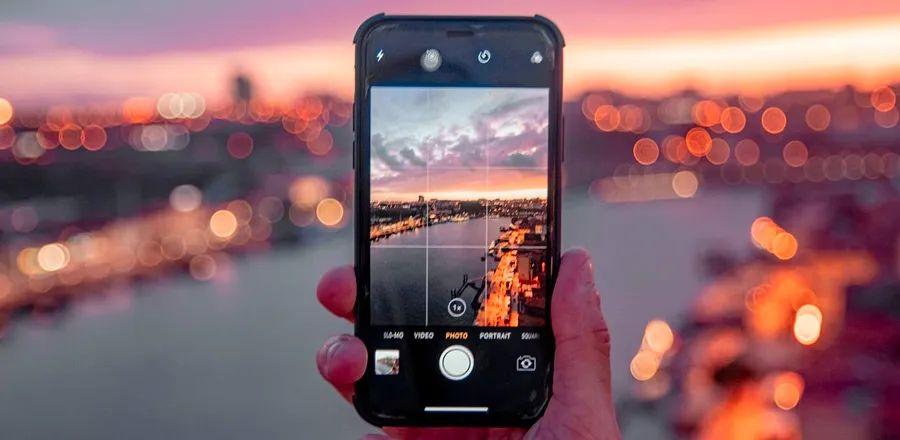Dinogo’s Comprehensive Guide to Traveling with Your Phone

Let’s face it: Traveling doesn’t mean you have to leave your cell phone behind. In fact, your device should play a key role in any journey. It captures stunning photos and, with a growing selection of travel-focused apps and features (Siri, how do I say “where’s the bathroom” in Farsi?), your phone helps keep you connected.
However, traveling can pose risks to your phone: theft, roaming fees, and accidental drops. Understanding international calling—like whether high-speed data is worth it and the details of unlimited data plans—can be quite challenging.
That’s why we’ve created this handy guide to prepare your cell phone for travel, whether you’re visiting your sister in Nashville, attending a friend’s wedding in France, or exploring Phnom Penh for the best Khmer cuisine.
Here’s everything you need to know about taking your cell phone abroad:

Image courtesy of Unsplash/Getty Images
Preparing Your Phone for International Travel
Before you travel internationally (even for a quick trip from the USA to Canada), it's essential to contact your mobile carrier or check their website to understand the costs associated with international travel on your plan. It’s wise to be cautious if you want your phone to remain your primary tool for communication and digital access. Mobile companies often charge exorbitant international roaming fees, leading to bills that can exceed $5,000.
Fortunately, many carriers offer special international roaming packages that can be added to your regular plan for your trip duration. These packages, which vary by provider, typically include a set number of voice minutes, text messages, and data for use abroad—some even offer unlimited calling. For instance, AT&T provides an International Day Pass instead of a monthly plan, covering over 210 destinations for $10 a day. This option includes unlimited talk, unlimited texting, and high-speed data, with charges only for the days the phone is used. Additionally, you can extend the unlimited plan to another number for just $5 a day. One of the best features of this international plan is that you will only be charged for up to 10 days total per line in a single billing cycle.
Verizon also provides TravelPass, which has a similar offering. The key difference is that you'll be charged $5 per day for using your phone in Mexico and Canada, compared to $10 per day for other international locations. By keeping track of the days you use the service (especially if you're on autopay), you can avoid unexpected charges.
Keep this question in mind: What data speeds can you anticipate based on your destination? While “unlimited data” sounds appealing, it doesn’t necessarily indicate how reliable the Wi-Fi, texting, or calling will be.

Image courtesy of Unsplash/Getty Images
Now, getting back to the details: Do you use AT&T, T-Mobile, or Google Fi? Great news! Your cell phone will likely function in most countries worldwide. These three carriers utilize the GSM network, which is standard in Europe and widely adopted in Africa, large parts of Asia, the Middle East, South America, and Oceania.
If you're with Verizon, your phone connects to the local CDMA network for data usage, which isn't as prevalent internationally. This network is common in Japan and South Korea, as well as in India and various regions of South America and the Caribbean. It's always wise to check with your carrier to determine where your phone will work and which data plan suits you best.
Prepaid phones are an excellent choice for extended stays abroad if you want to avoid international data fees or if your current phone isn’t compatible with local networks. The process is straightforward: buy an affordable handset ($50–$200) and load it with prepaid minutes, texts, and data. Think of this as a pay-as-you-go solution. While you can find prepaid phones in almost any country, we suggest using services like onesimcard.com for handsets and prepaid plans.
You can also unlock your phone so that it can accept any local SIM card, whether foreign or domestic. Although there are many online guides explaining how to unlock a phone, it’s wise to tread carefully, as this may void your warranty. Consider your typical data usage and try to estimate how much you’ll require while traveling for the best outcome.

Photo by Max van den Oetelaar/Unsplash
Preparing Your Phone for Domestic Travel
One thing carriers often overlook is the specific locations where their coverage is available. Typically, you'll see coverage claims for European nations or large regions, but the reality is that service can vary significantly even from one block to the next within a city.
This is why we recommend using resources like opensignal.com. If you appreciate studies, data, and graphs, this site excels in providing insights. Simply enter a location—whether it’s a remote area like Yosemite—and it will reveal which major carriers offer the best coverage, along with details on broadband service and updates on improvements. Additionally, you'll find information about the number of cell towers and networks nearby, signal strength, and available Wi-Fi hotspots.
Enhancing Your Phone's Photo and Video Quality
Today's smartphones come equipped with highly sophisticated camera optics. For instance, the Apple iPhone 15 Pro can record 4K videos with a 120 mm zoom, while the Google Pixel 8 captures images at an impressive 50 megapixels. However, there are still several ways to enhance the quality of your camera shots.
The default photo-editing applications on most smartphones are continuously improving. However, we prefer the advanced features offered by apps like Adobe Lightroom, VSCO, and Camera+ for iOS. For Android users, apps such as Snapseed, Bazaart Photo, and Camera FV-5 are excellent for crafting beautiful images and videos.
To enhance your camera's zoom and macro capabilities, consider getting an additional lens clip. We particularly like the Olloclip, a compact lens system compatible with iPhone, iPad, and Samsung Galaxy, which provides options for macro zoom, fish-eye effects, and telephoto shots.
What to Do If Your Phone Is Lost, Damaged, or Stolen
If your phone has been snatched by a pickpocket, thrown into an active volcano, or trampled by a herd of wildebeest, take a deep breath and remember the wise words of Douglas Adams: DON’T PANIC. With some preparation, losing or damaging your phone can become just a minor hassle.
A few weeks—or even better, months—before your trip, contact your carrier to check the current rates for mobile phone insurance. Most providers offer plans that can replace or repair your phone for a modest deductible. Just be sure to read the fine print: many policies exclude coverage for natural disasters or may replace your device with refurbished units.

Photo by karl muscat/Unsplash
Third-party insurance options are available from providers like Asurion and SquareTrade (a subsidiary of AllState). While these plans may be slightly more expensive, they often provide a brand-new replacement for your phone in case of damage. Be sure to check the fine print, as some companies might require you to have the remnants of your device to file a claim. Additionally, your standard travel insurance may cover phone theft or damage, but this typically requires a more comprehensive plan that comes with additional costs—worth exploring before making any decisions.
When capturing photos with your smartphone, remember to connect to the Internet and periodically upload your pictures during your trip. Many devices and services do this automatically through platforms like iCloud, but it’s wise to manually sync your device to ensure all uploads are successful.
Lastly, make sure to enable location services like Find My iPhone and Where’s My Droid, which can assist in locating your phone if it gets lost or stolen.
This article was first published online in 2015 and was most recently updated on December 13, 2023, to reflect the latest information.

1

2

3

4

5
Evaluation :
5/5